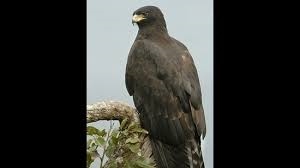Daily News Analysis.
MeitY-NSF Research Collaboration
News: As part of its research relationship, the Ministry of Electronics and Information Technology (MeitY) and the National Science Foundation (NSF) (USA) have released their first joint call for proposals.
- The project is founded on areas of mutual interest mentioned in a Joint Statement issued by the governments of India and the United States.
- In the inaugural Joint Call, proposals are being sought in the areas of semiconductor research, next-generation communication technologies, networks, and systems, cybersecurity, sustainability and green technologies, and intelligent transportation systems.
- Through several stages like prototype creation, pilot-scale demonstrations, field deployment, and technology transfer acceleration, this cooperative endeavor seeks to promote technology.
National Science Foundation (NSF), USA
The United States federal government’s independent National Science Foundation promotes foundational study and training in all engineering and science disciplines outside of medicine. The National Institutes of Health serves as its medical equivalent.
All 50 states and U.S. territories get funding from the independent government organization known as the National Science Foundation for science and engineering.
Congress created the NSF in 1950 with the following goals
– To advance science.
– Promote the wellbeing, wealth, and health of the country.
– Ensure the country’s defense.
We principally carry out our mission through grantmaking. About 25% of the federal funding given to American colleges and universities for fundamental research—research motivated by curiosity and discovery—comes from our investments. Additionally, we back research that focuses on finding solutions and has the potential to benefit American society.
Market Coupling
News: Introducing market coupling in India’s power industry is the subject of a staff paper published by the Central Electricity Regulatory Commission (CERC).
- In the energy industry, a procedure known as “market coupling” involves matching bids from several power exchanges to provide a standard market clearing price for the selling of electricity.
- It attempts to maximize economic surplus, make the most use of the transmission infrastructure, and simultaneously benefit both buyers and sellers.
- This procedure aids in effective price discovery and the blending of various electrical markets or regions, encouraging openness and competition in the energy trading industry.
- Under the CERC Power Market Regulations (PRC) 2021, the CERC (Central Electricity Regulatory Commission) has established measures for market coupling across power exchanges throughout the nation.
Central Electricity Regulatory Commission
- In order to close the gap between supply and demand and thereby advance consumer interests, the Commission wants to encourage competition, economy, and efficiency in the bulk electricity markets.
- It also wants to boost investments, enhance the quality of the supply, and advise the government on how to get rid of institutional hurdles.
The Commission seeks to achieve these goals by
- Through the use of the Indian Electricity Grid Code (IEGC), the Availability Based Tariff (ABT), and other methods, the administration and operation of the regional transmission systems are improved.
- Create a framework for effective tariff setting that ensures prompt and time-bound resolution of tariff petitions, encourages competition, economy, and efficiency in the price of transmission and bulk power services, and guarantees least-cost investments.
- Encourage inter-state transmission with open access
- Encourage interstate trade
- Encourage the growth of the power market
- Increasing information availability for all interested parties.
- Assist in the technological and institutional reforms needed for the creation of competitive markets for transmission and bulk power.
As the initial stage in establishing competitive marketplaces, suggest removing obstacles to enter and exit for management and capital, while keeping in mind existing legal requirements and environmental, safety, and security issues.
The Debt-Fossil Fuel Trap
News: Report on Debt-Fossil Fuel Trap HIGHLIGHTS Poor countries forced to rely on fossil fuels to produce income to pay back loans from wealthier countries because of their enormous debt loads.
- Anti-debt campaigner’s Debt Justice and partners in affected countries have produced the report, The Debt-Fossil Fuel Trap.
- Fossil fuel production is viewed as a way for developing nations to create income and reduce debt.
- Up until 2050, creditors are entitled to 30% of oil revenue, which encourages further oil exploitation.
- In order to alleviate the debt issue, Argentina encourages fracking in Vaca Muerta (Northern Patagonia).
- Projects involving fossil fuels frequently generate less money than anticipated, which results in increased debt.
- Between 2011 and 2023, payments on the global south’s external debt increased by 150%, hitting a 25-year high.
- 54 nations with debt problems reduced public spending during the pandemic to pay back loans.
- Extreme weather conditions cause nations to increase their borrowing for adaptation and mitigation measures.
- After Hurricane Maria struck the island in 2017, Dominica’s debt as a percentage of GDP increased from 68% to 78%.
Black Eagle : Spotted
News: In the beautiful Chail wildlife sanctuary, which is found in Himachal Pradesh’s Solan district, a rare black eagle was seen for the first time.
- The only species of the genus Ictinaetus, the Black Eagle is a member of the Accipitridae family.
- These are the enormous, recognizable dark eagles of the hills and mountains covered in vegetation.
- The stately bird is easily recognized by its eye-catching yellow beak, which stands out against its black feathers.
- In the hilly tropical and subtropical South and Southeast Asia, as well as southern China, they soar over forests.
- They can be found in the Eastern and Western Ghats forests of peninsular India, in the Indian states of Himachal Pradesh and Jammu & Kashmir.
Status of conservation: IUCN: Least concern
Chail Wildlife Sanctuary
- It is situated in the Himachal Pradesh state.
- It makes up a portion of the Giri River’s tributary’s catchment area.
- Aside from grassland, it is heavily covered in oak and pine.
- Wild boar, goral, sambar, spotted deer, Himalayan black bear, common langur, Indian porcupine, flying squirrel, etc. are among the animal species included.
Mylara cult : Discovery Of Two Sculptures
News: The ancient Mylara cult was evident in the coastal area, as demonstrated by the recent discovery of two sculptures at Basrur in the Karnataka province of Udupi.
Key conclusions
- The two statues mimic ones from the 15th century and the 17th century, respectively.
- It depicts a regal hero riding a horse while holding a bowl in his left hand and a sword in his right hand, respectively.
- But the horse’s back is devoid of Mylaladevi. The horse depicted with swords in their right hands was discovered in another body of water.
- The medieval trading city of Basrur has a long history.
- Uhayadesi, Nanadesi, and other trading guilds took an active part in the trade.
The Mylara cult
- Folklore claims that the goddess Mylara is a form of Lord Shiva.
- Numerous additional names, including Khanderao and Khandnatha, are also used to refer to this god, which is also known as Mailara in Karnataka and Khandoba in Maharashtra.
- In the southern region of India, which includes Karnataka, Maharashtra, Andhra Pradesh, and Tamil Nadu, this cult is very common.








